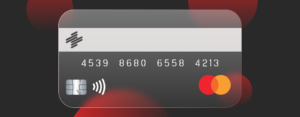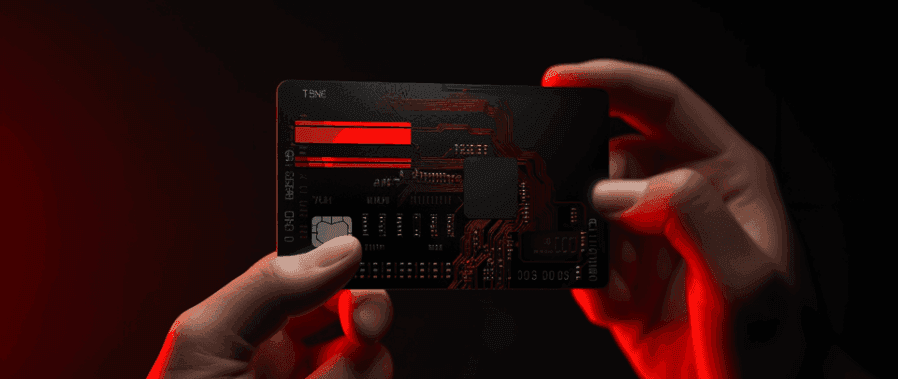International transactions have become commonplace in the global financial world. But what is an IBAN? Is it even important for smooth cross-border banking?
This blog post reveals the secrets behind IBANs and their importance in international banking transactions.

International Bank Account Number (IBAN)
IBANs, short for International Bank Account Numbers, are essential for making or receiving fast, secure, and error-free cross-border payments.
Unique to each individual and account, the IBAN acts as a safeguarding system by verifying account data before transferring funds between international banks.
The IBAN number consists of up to 34 alphanumeric characters. Each section of the IBAN provides specific information about your account and helps to ensure its accuracy during transactions.
In practical terms, an IBANn is a distinct code used exclusively for international payments, separate from your regular account and sort numbers. Its purpose is to enable overseas banks to identify your bank account, allowing for seamless sending and receiving of international payments.
Why was IBAN created?
The IBAN was created to simplify and standardize international banking transactions. Before the public started using IBAN globally, transfers from one country to another required different account number formats. It often led to errors, delays, and increased costs.
Now we live in a global world. Therefore, the increase in cross-border trade between businesses and individuals has created the need for a single system. The International Organisation for Standardisation (ISO) has developed the IBAN system, which has become the universally accepted format for identifying bank accounts.
📚Related: Simplifying the Concepts of IBAN and SWIFT Code
The purpose of an IBAN
By implementing IBAN, these benefits contribute to a more efficient and secure international payment system.
- Minimize the occurrence of data entry errors.
- Expedite payment processing by reducing delays.
- Mitigate the risk of transferring funds to incorrect accounts.

How an International Bank Account Number (IBAN) works?
When initiating an international transaction, the bank’s payment system confirms the unique IBAN. The system cross-verifies the numbers and letters against its comprehensive database, thereby guaranteeing the authenticity and validity of both the sender’s and recipient’s accounts.
Once it validates the information, the payment takes place. This comprehensive verification process ensures secure transaction processing.
Who uses International Bank Account Numbers (IBAN)?
The IBAN system was originally designed to facilitate electronic payments between Eurozone banks. Eventually, it was adopted worldwide.
However, not all banks and regions have adopted this standard. Therefore alternative systems such as SWIFT are still needed. Countries in North America, Australia, and Asia do not use IBAN for domestic money transfers.
Today, IBANs are used in more than 70 countries worldwide. Although not all countries have adopted IBAN for domestic transfers, it is becoming necessary for international transactions with countries that have adopted the system.
Components of an IBAN number
It consists of a maximum of 34 alphanumeric characters. These characters are grouped and have different meanings:
- Country code: A two-letter country identification code.
- Check the digits: the digits of the check are assigned by the financial institution that issued the account to check the accuracy of its number.
- Bank identifier: This identifies the financial institution. In some cases, the bank identifier may also contain information about a specific institution’s branch.
- Basic Bank Account Number (BBAN): It uniquely identifies an individual account with a specific financial institution and country.

IBAN vs. SWIFT code
The International Bank Account Number (IBAN) and the Society for Worldwide Interbank Financial Telecommunication (SWIFT) code are two internationally recognized, standardized methods. They help to identify bank accounts for international transfers. Each code is used for a different purpose in the international financial market.
The IBAN code displays information about the beneficiary’s bank, country, and specific account.
On the other hand, the SWIFT code lets you identify a specific bank. The Swift code characters denote the bank, country code, area code, and branch identification. Unlike the IBAN, the SWIFT code does not specify a specific account number.
SWIFT has extensive messaging capabilities and remains the main method for international fund transfers. It allows banks to exchange a large amount of financial data: account status, debit and credit amounts, and transfer details.
European Union and neighboring countries use IBANs. Financial institutions in both the United States and Canada acknowledge and utilize the IBAN system for conducting outbound international transfers.
On the other hand, SWIFT codes are more widely acceptable, especially outside Europe. Banks and other institutions such as brokerage firms use these codes.
IBAN vs BIC
The term ‘Bank Identification Code’ (BIC) is a SWIFT code alternative. For this reason, BIC and SWIFT codes are often seen together as SWIFT/BIC.
The SWIFT network serves as the platform for international transfers, where BICs (Bank Identifier Codes) are the designated codes employed within this network.
So what is the difference between IBAN and BIC? The IBAN primarily signifies both the country of operation for the bank and the specific account number associated with the individual within that institution.
On the other hand, the BIC (Bank Identification Code) provides more specific information to facilitate the transaction.
It consists of alphanumeric characters, including a 4-letter bank code, a 2-letter country code, and a branch identifier of a letter and a number.
It is essential to have the correct BIC. An incorrect BIC may result in additional costs incurred after the transaction to correct a misdirected transfer.
FAQ
How do I find my IBAN number?
You can usually find your IBAN number on your printed bank statement, together with your account number and sort code.
Also, you can always check this number in your online banking account under Account details.
In addition, some European banks print the IBAN number on their customers’ bank cards.
You can’t find your IBAN number? We recommend you contact your bank’s customer service. How Can I Get an IBAN?
Is an IBAN the same as an account number?
No. The IBAN number is a standardized international numbering system. It lets banks identify bank accounts for international transactions.
The account number is a part of IBAN. It is a unique identifier that the bank assigns to a specific account in its system.
Is the sort code in the IBAN number?
No, it is not. It is a code for local payments in UK and Ireland.
Which countries use IBANs?
Many countries around the world use IBAN, but certainly not all.
Most of the countries that use IBAN are in Europe. Non-European countries such as Australia, the United Arab Emirates, Saudi Arabia, Canada, and Singapore also use IBAN.
Many other countries have started to use IBAN or have implemented similar systems for international bank transfers.
What happens if you used the wrong IBAN number?
Using the wrong IBAN for a bank transfer can lead to various consequences. However, the consequences are highly dependent on the situation. Here are a few possible outcomes of using the wrong IBAN number include:
Payment delay or rejection
If the IBAN you provide is incorrect or does not match the beneficiary’s bank account, the beneficiary’s bank may delay or reject the payment. In this case, the bank may withhold or return all funds to the sender.
Additional fees
Processing and investigation of incorrect or failed transactions may be charged to the bank. The amount of the fees may be different.
Loss of funds
If the incorrect IBAN corresponds to a valid bank account, funds may be transferred to that account. Unfortunately, if the account belongs to someone else, it may be difficult to recover these funds. It may require the involvement of banks or even legal procedures.
Difficulties in solving the problem
Problems caused by incorrect use of IBAN can take time to resolve. It may also require coordination between the sender’s and receiver’s banks. If you use the wrong IBAN to initiate a payment, you should contact your bank as soon as possible.
How safe is an IBAN?
The transfer of funds using an IBAN number for international payments within the euro area is secure.
Other people can deposit money into your account using your IBAN. However, they cannot withdraw the money. Therefore no risk to the security of your funds.

